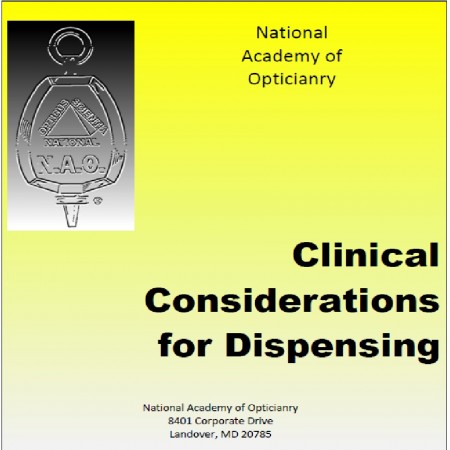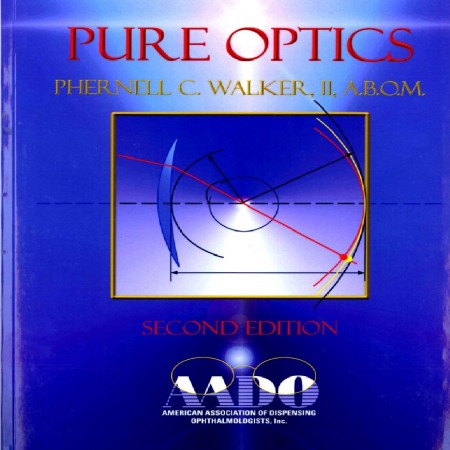Description
ABO Beginners’ Teaching Tool: Basic Opticians Tutorial (#BOT)
Updated 2016
(The following is a random selection of text from the Basic Opticians Tutorial)
Basic Measurements for Eyewear
A number of eyecare professionals have been taught various ways of measuring a patient’s pupillary distance and while this author recognizes that it is possible to utilize each one, for simplicity purposes, I will explain the most commonly accepted methods.
Let’s begin by explaining what the PD is. It is actually referred to as the interpupillary distance. It is the anatomical distance from the center of one pupil to the center of the other pupil. Measurement is performed in millimeters. The purpose for this measurement is to align the optical center of a lens directly in front of the visual axis of the patient’s eye. Failure to do so induces unwanted prismatic effects. As you will determine in measuring this critical measurement in various patients, people are not the same size, nor are the distances between their eyes the same. In addition, you will find that even on a singular patient, oftentimes, one eye will be further from the center of their bridge than the other eye. For this reason, it is best to perform monocular (one eye) measurements rather than binocular (both eyes) measurements.
Once you understand how to measure the patient’s PD, you will then be able to determine decentration. This is where the PD is used to determine the placement of the optical centers of the lenses in order to avoid unwanted prismatic effects.
Next we will use decentration and eyesize to determine minimum blank size. You may feel that using the largest blank you have will ensure that the lens will cut out. While this may be true, it produces waste in minus lenses, and in plus lenses, you will find that it increases the center thickness of the lens. So minimum is best.
Finally, measuring the parts of a frame will be discussed. Distant Pupillary Distance (DPD)
While this measurement is commonly referred to as distance interpupillary distance or distance pupillary distance, the Dictionary of Ophthalmic Optics gives the definition thusly:
Distant Interocular Distance (DIOD): The horizontal linear measurement in millimeters between the reflexes on the visual axes of the two eyes, measured at the plane of the spectacles with the head in the primary position (the eyes focused at infinity). Loosely and incorrectly referred to as “distant interpupillary distance”, or distant PD. Equal to the distance between major reference points.
Using a Millimeter Ruler (PD Rule)
This method has over the years been the most common way to measure a PD, but as technology continues, other methods are taking its place. Make sure that the measurement that you take corresponds with the intended use of the wearer.
For the binocular distant PD, have the patient sit across from you and facing you. Make sure that you are on the same plane. Next, place the millimeter rule on the patient’s nose, tilted back toward the recessed part of their bridge. Shine a penlight in their right eye, while holding the light source directly under your left eye. Close your own right eye, and have the patient look at your left eye. Adjust the ruler so that the 0 is lined up at the reflection of the light on their right eye. Then move the penlight to just beneath your right eye, and have them look at your right eye, while you close your left eye. Shine the light in their left eye. Take the reading (calibration) that is at the reflection of the light on their left eye. See diagram…







